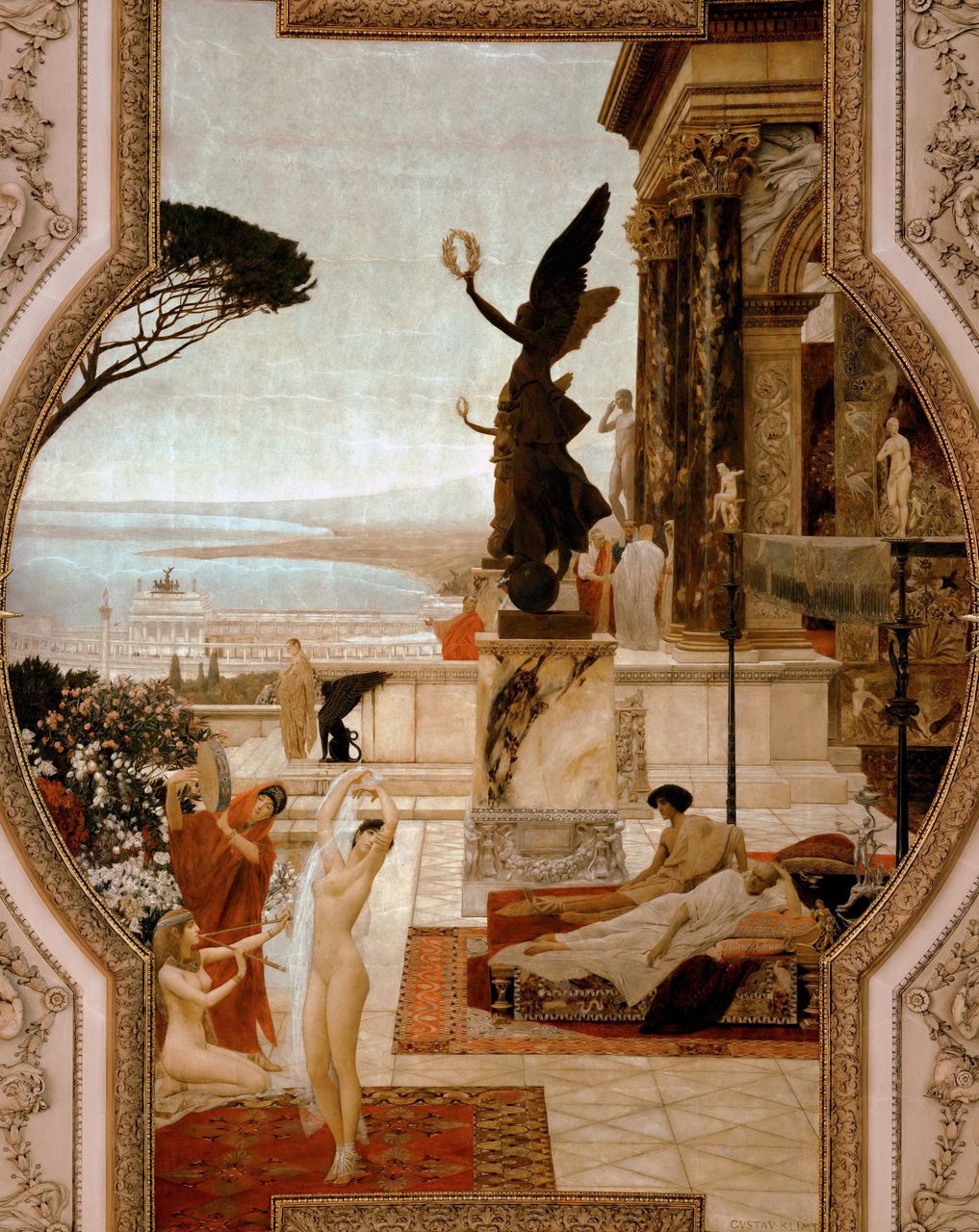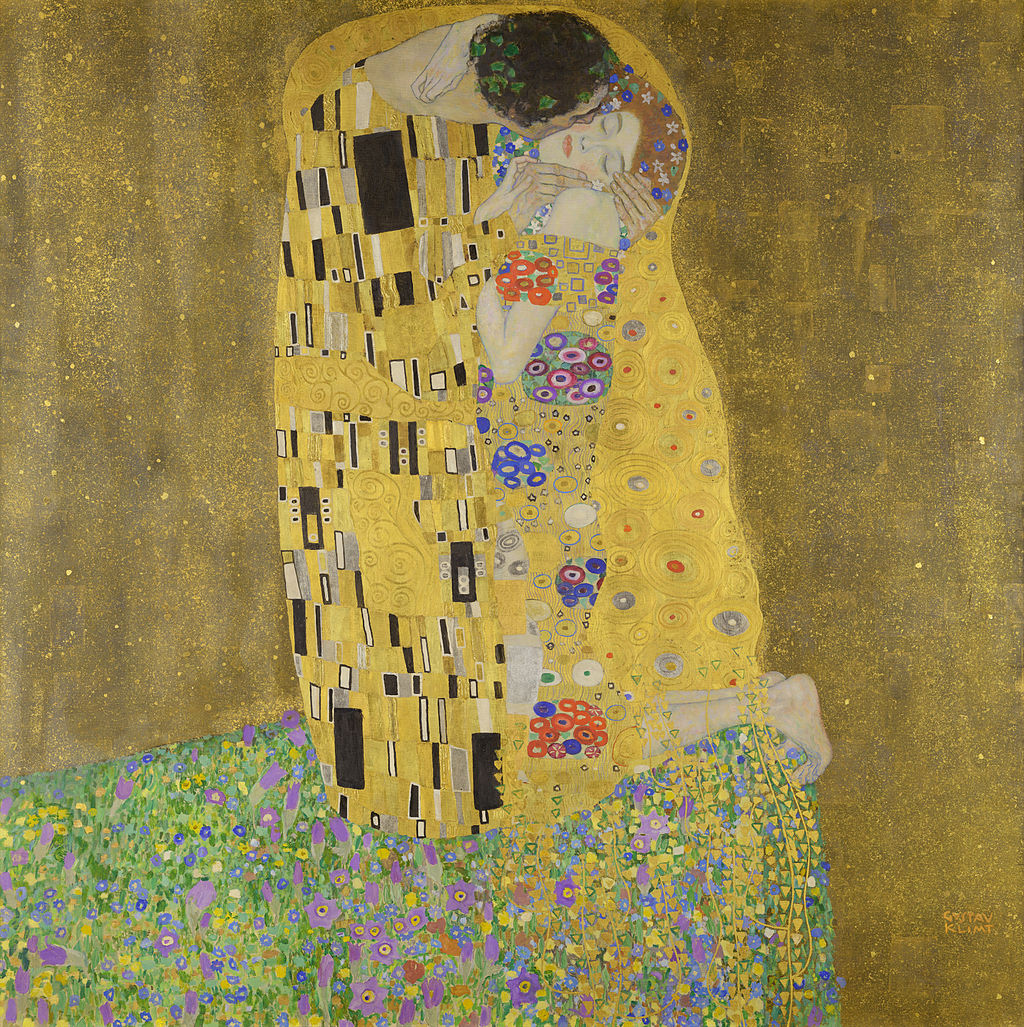As February is the month of love, we thought it would be appropriate to feature one of the most romantic and sensual paintings in history – The Kiss (Lovers), by Gustav Klimt.
Before Klimt’s gold period (during which The Kiss was painted), Klimt painted for the State, with his work being hugely acclaimed by officialdom. These works were academic and traditional in style. One of his most famous earlier works is the ceiling painting in the Burgtheater in Vienna. Measuring 7.5m by 4m, this incredible work depicts the Greek theatre in Taormina. Everything in this painting is meticulously described and observed; the majestic building forms the backdrop to the foreground where a woman is performing. Klimt, in partnership with his brother Ernst and their friend Franz Match (eventually disbanded), decorated theatres throughout the Austro-Hungarian Empire, and much of their work can still be seen today.

In his 30s he was cast out as a rebel after the scandal surrounding his paintings for the University of Vienna; large-scale ceiling paintings including motifs of Medicine, Jurisprudence, and Philosophy. Klimt did not adhere to his conservative-historical painting style and was asked repeatedly to rework the paintings. He liked to quote the poet, Friedrich Von Schiller (1759-1805), “If you cannot please everyone through your actions or your artwork, then please the few. To please the multitude is bad.” Unfortunately, together with many other works by Klimt, the paintings were destroyed in a fire set by the retreating German army during the last days of war.
During this period, Klimt’s reputation transformed and his artistic person reinvented. He became the first President of the Vienna Succession, also known as the Union of Austrian Artists, with a vision to end the the distinctions in considering some art to be superior to others.
Kilmt travelled to Ravenna in 1903 and saw the Byzantine mosaics in the Basilica of San Vital for the first time. Witnessing the rich, vivid mosaics and the power of their beauty was a turning point in Klimt’s art practice, and saw the creation of The Kiss.
It has been speculated that this masterpiece had a personal agenda for the artist. It is claimed that the woman featured is Emilie Floge, fashion entrepreneur, long-time friend of Klimt’s and his sister-in-law. A sketchbook was discovered in 1917 containing preparatory sketches of The Kiss, with “Emilie” written in big letters beside them. There was controversy surrounding the platonic nature of their relationship, as Klimt kept his personal life out of the public eye. When he collapsed, suffering a stroke (which led to his death) in 1918, his first words were “Fetch Midi” (his name for Emily).
This incredibly beautiful painting, at 180cm x 180cm, shows their intense love transporting them into their own world, oblivious of their surroundings. The woman, beautiful, serene and passive, like most women in Klimt’s work, softly touches the hand that is embracing her so lovingly. This painting is unlike his many erotic drawings and paintings of couples; the embrace is much more loving than overtly sensual.

Written by Lauren Ottaway

